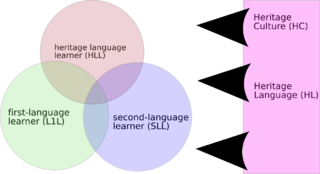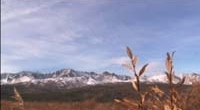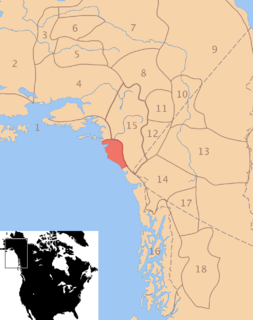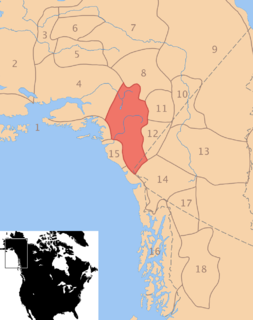| Babine–Witsuwit'en | |
|---|---|
| Witsuwit'en | |
| Native to | Canada |
| Region | British Columbia |
| Ethnicity | 3,410 Nadot'en (Babine) and Wet'suwet'en in 7 of 9 communities (2014, FPCC) [1] |
Native speakers | 135 (2016 census) [2] |
Dené–Yeniseian?
| |
| Dialects | |
| Language codes | |
| ISO 639-3 | bcr |
| Glottolog | babi1235 [3] |
Babine–Witsuwit'en or Nadot'en-Wets'uwet'en is an Athabaskan language spoken in the Central Interior of British Columbia. Its closest relative is Carrier. Because of this linguistic relationship together with political and cultural ties, Babine–Witsuwit'en is often referred to as Northern Carrier or Western Carrier. Specialist opinion is, however, that it should be considered a separate, though related, language (Kari 1975, Story 1984, Kari and Hargus 1989). [4] [5] [6]

Athabaskan or Athabascan is a large family of indigenous languages of North America, located in western North America in three groups of contiguous languages: Northern, Pacific Coast and Southern. Kari and Potter 2010:10 place the total territory of the 53 Athabaskan languages at 1,563,000 mi2 or 4,022,000 km2.
The British Columbia Interior, BC Interior or Interior of British Columbia, usually referred to only as the Interior, is one of the three main regions of the Canadian province of British Columbia, the other two being the Lower Mainland, which comprises the overlapping areas of Greater Vancouver and the Fraser Valley, and the Coast, which includes Vancouver Island and also including the Lower Mainland.
Contents
- Classification
- Phonology
- Consonants
- Vowels
- Grammar
- Lexical categories
- Syntax
- Words and phrases
- See also
- References
- Bibliography
- External links
A term used briefly in the 1990s is Bulkley Valley – Lakes District Language, abbreviated BVLD. Ethnologue uses the bare name Babine for the language as a whole, not just for the Babine dialect. [7]
Ethnologue: Languages of the World is an annual reference publication in print and online that provides statistics and other information on the living languages of the world. It was first issued in 1951, and is now published annually by SIL International, a U.S.-based, worldwide, Christian non-profit organization. SIL's main purpose is to study, develop and document languages to promote literacy and for religious purposes.
As its name suggests, Babine–Witsuwit'en consists of two main dialects, Babine (Nedut'en) and Witsuwit'en. Babine is spoken around Babine Lake, Trembleur Lake, and Takla Lake. Witsuwit'en is spoken in the Bulkley Valley, around Broman Lake, and in the vicinity of Skins Lake. The two dialects are very similar and are distinguished primarily by the fact that in Babine but not in Witsuwit'en the Athabaskan front velar series have become palatal affricates.
In its broader sense, Babine refers to the Athabascan indigenous peoples who speak the Babine dialect of the Babine-Witsuwit'en language in the vicinity of the Babine River, Babine Lake, Trembleur Lake, and Takla Lake in the central interior of British Columbia, Canada.

Babine Lake is the longest natural lake in British Columbia, Canada.
Trembleur Lake is a lake in the Omineca Country of the Central Interior of British Columbia, Canada, northwest of Fort St. James between Stuart Lake and the south end of Takla Lake. It is part of a group of lakes known as the Nechako Lakes. Its name in the Dakelh language (Carrier) is Dzindlat Bun. It has also been known as Cross Lake. Trembleur Lake Provincial Park is located on its north shore, above the Middle River. The reserve settlement of Middle River is located at that river's mouth into Trembleur Lake.
Like most languages native to British Columbia, Babine–Witsuwit'en is an endangered language. It is spoken by a minority of the population, primarily elders. There are 161 fluent and 159 partial speakers of the Babine dialect [8] and 131 fluent and 61 partial speakers of the Witsuwit'en dialect. [9] At most, a handful of children are still speaking the language. [10]

An endangered language, or moribund language, is a language that is at risk of falling out of use as its speakers die out or shift to speaking another language. Language loss occurs when the language has no more native speakers and becomes a "dead language". If no one can speak the language at all, it becomes an "extinct language". A dead language may still be studied through recordings or writings, but it is still dead or extinct unless there are fluent speakers. Although languages have always become extinct throughout human history, they are currently dying at an accelerated rate because of globalization, neocolonialism and linguicide.







